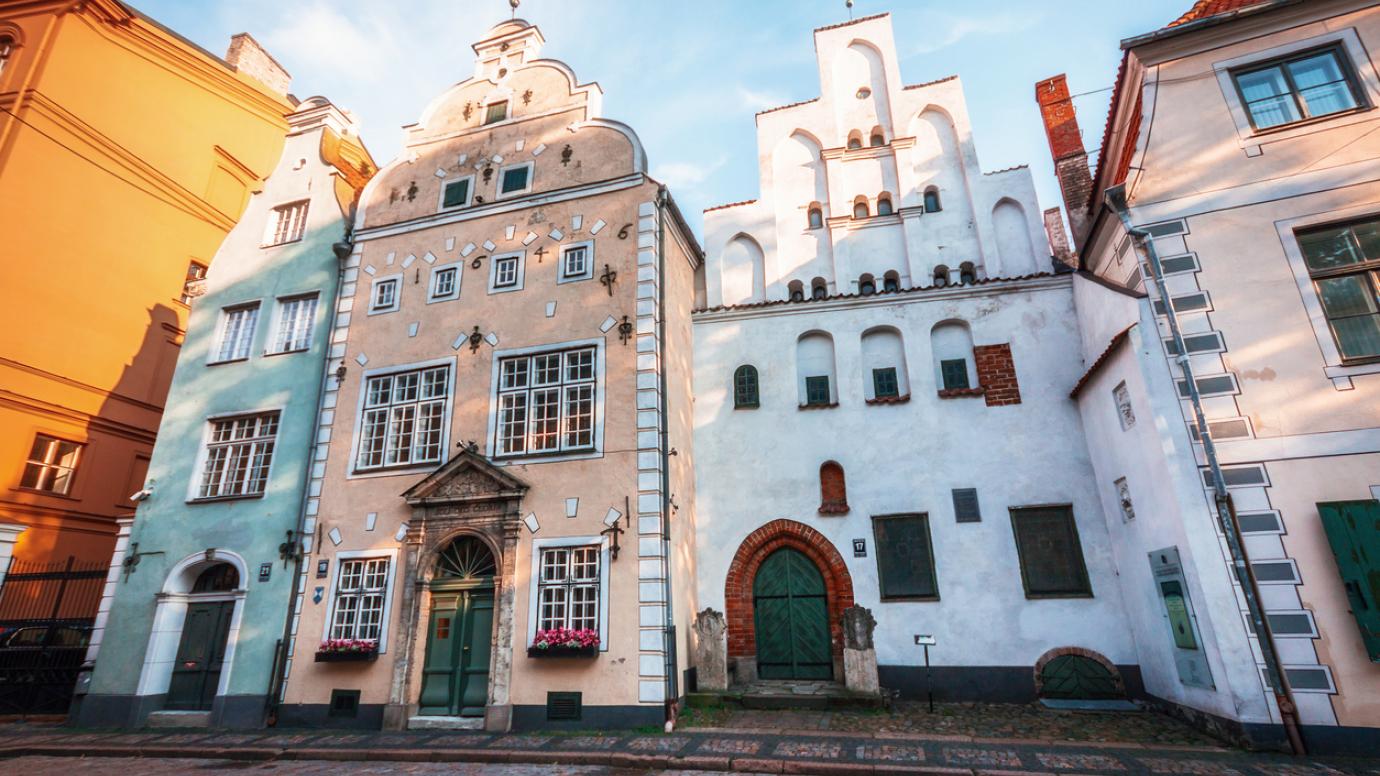The “Three Brothers” is a complex of three houses in Riga built between the 15th and 17th centuries. Amongst the three is the oldest known surviving stonebuilt house in Riga and a building with a façade based on drawings by Hans Vredeman de Vries. The buildings are characteristic of dwelling houses found in Hanseatic towns in the Baltic Region. Over the centuries they have undergone changes. The most recent intervention took place in the 1950s under the architect Peteris Saulīis. In this restoration campaign, parts from other destroyed and lost buildings were integrated into the ensemble.
During the Soviet occupation of Latvia the complex was one of the first sites to be restored, building on the preservation philosophy and practice originating from the Latvian Republic in the inter-war period. This philosophy which aims to retain a maximum of historic material, including wear and tear, also informed other restoration projects, despite the threats and pressure from the Soviet occupiers. The pivotal role of the site in heritage preservation in Latvia continues as it is the home of the National Heritage Board and the Latvia Museum of Architecture.
Heritage preservation and the concepts that informed its practice were instrumental in building resistance to the destruction of Latvian culture during the Soviet occupation, and for sustaining the link with Europe and the value of freedom during this period. The “Three Brothers” was at the centre of this movement.
After independence in 1991, high priority was given to heritage policy, which was based on the principles for cultural heritage preservation developed in Europe. This continues up to the present, with the new dimension of heritage policies integrated into a long-term vision based on the example of protecting historic Riga from negative impacts of over-exploitative economic development. As a result, the "Three Brothers" have become a symbol of cultural heritage protection systems and their ‘soft powers’ in Europe.



